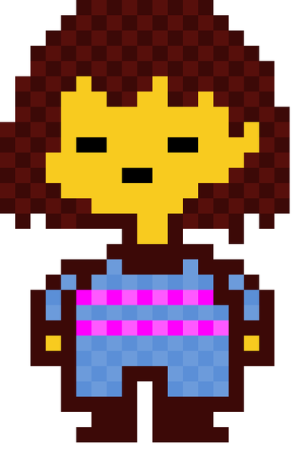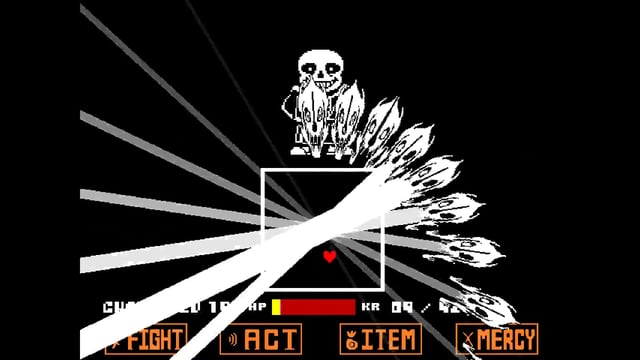Undertale: The Game of the Year No One Expected
A scene from the battle with SANS, the most difficult battle in the game. The player must move the heart to avoid SANS’s attacks.
December 21, 2015
With the recent release of major triple-a titles such as Fallout 4, Black Ops 3, and Star Wars Battlefront, the Undertale release went unnoticed by many gamers. Undertale was praised for its unique gameplay in its deep battle system, and for its dark, yet witty humor. Despite it’s small budget of only $51,124, the gameplay blew many gamers and reviewers away. Many video game critics praised the game, which received a 9.5 from Game Informer and a 10 on Destructoid. It’s game’s soundtrack includes songs with elements of music from classic NES (Nintendo Entertainment System) and SNES (Super Nintendo Entertainment system) titles such as Megaman, Castlevania, and Metroid. It’s very praised for its soundtrack, which reinforces the game’s earth-shattering moments, knowing just when to rise and fall, and the frequent use of melodic lines subconsciously places you in the shoes of the main protagonist. Each song is reminiscent of a time when melodies had to be simple yet discernible, and each piece finds a way to grow outside the realm of chiptunes without losing that simplicity.
The game starts begins with a cutscene explaining the story and giving context to the world of Earth and the Underg round. Long ago, the humans and monsters lived as equals on Earth, but one day, a war broke out between the two groups, in which the humans emerged victorious. The most powerful magicians sealed the monsters to the Underground, while the humans controlled the surface. The main character, revealed to be named Frisk later in the game, stumbles into the one hole to access the sealed monsters, at Mount Ebott, and thus begins his adventure in the Underground. With a seemingly simple and cliché beginning, Undertale’s true innovation prevalent in its gameplay mechanics, breakage of the fourth wall, and branching storyline, dependant on the player’s actions and interactions.
round. Long ago, the humans and monsters lived as equals on Earth, but one day, a war broke out between the two groups, in which the humans emerged victorious. The most powerful magicians sealed the monsters to the Underground, while the humans controlled the surface. The main character, revealed to be named Frisk later in the game, stumbles into the one hole to access the sealed monsters, at Mount Ebott, and thus begins his adventure in the Underground. With a seemingly simple and cliché beginning, Undertale’s true innovation prevalent in its gameplay mechanics, breakage of the fourth wall, and branching storyline, dependant on the player’s actions and interactions.
The gameplay is simple; encounter monsters and fight them for experience and money. As the player levels up, they gain more health, grow stronger, and gain defense. However, the twist to this game is that the player is able to dodge enemy attacks, during battles, in a bullet-hell-type “minigame”. This system forces players to learn enemy patterns and types of attacks, which requires more skill. If desired, the player can Compliment/Threat the enemy in attempts to make it runaway. Certain enemies are susceptible to different actions that make them run away. The branching storyline also includes the player’s actions in battle: those who decide not kill any enemies,may be able to unlock dialogue that would not pop up if they decided to slay every monster. This idea that every action that you make impacts the overall ending of the story immerses the player in this dark, yet witty game packed full of nostalgia-inducing music and gameplay.
If so desired, anyone can pick this game up on Microsoft Windows computers and OS X Apple products today for only $9.99. Even at at such a low price, it blew reviewers and critics out of the water, surprising them with a well executed, fun, and in depth RPG bullet-hell game. For those who loved games such as Earthbound, Mario & Luigi, Superstar Saga, and Super Mario RPG, and music from games like Castlevania, Final Fantasys I-VI and Fire Emblem, are highly recommended to play this game. Its gameplay and replayability will provide any player with countless hours of fun. Nevertheless, its unique features and storyline would make it a game worth playing for everyone.



